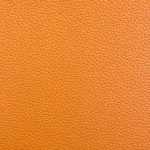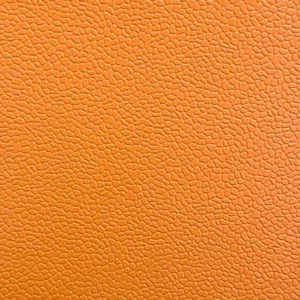Vinyl sheet flooring is a great option for many types of businesses. It is durable, easy to clean, and install in various ways. It is a relatively low cost, resistant to many chemical products, and easy to work with. But just because it’s widely used doesn’t mean you can install it without the right level of care or knowledge. Here are the steps you need to take when installing or maintaining the sheet vinyl flooring.

Tips before getting started
Before you start installing your PVC sheets, ensure you have all the necessary tools on hand.
- To begin, it’s crucial to properly prepare the base for the vinyl flooring installation. This includes ensuring the subfloor is clean, dry, and level.
- Take a moment to carefully read the manufacturer’s instructions. They contain valuable insights specific to the product.
- Vinyl flooring comes in various thicknesses, widths, and lengths. Understanding these options will help you choose the best fit for your space.
- Don’t overlook the importance of adding an expansion joint around the room’s perimeter where you’re installing the vinyl floor. This step is crucial for long-term stability.
- Remember to prioritize safety. Wear gloves and a dust mask when working with adhesive or primer.
- Select a well-ventilated room for laying the vinyl floor. Adequate ventilation ensures a healthy working environment.
If possible, consider laying the vinyl floors in several sections. This helps to minimize seams, providing a smoother, more seamless finish.

The Required Tools for Installation of PVC sheet flooring
To ensure a smooth installation process, gather the following essential tools:
- Jigsaw
- Measuring tape
- Pencil
- Level
- Chalk line or string
- 100-foot (30.48-meter) heavy-duty chalk line reel or string
- Square-notched trowel
- Rubber float
- Vinyl adhesive (for solvent-based adhesives only)
- PVC primer
- Utility knife
- Wire Solder

Preparing the base
Prior to laying down the vinyl sheet, it’s crucial to prepare the base properly. This involves a series of steps:
- Start by removing any existing flooring material, whether it’s vinyl tile, linoleum, or carpet. This creates a clean slate for the new installation.
- For concrete bases, carefully inspect for any cracks or defects. If any are found, fill them in with a concrete patching compound and allow it to fully dry. This ensures a smooth, even surface.
- Address any high spots on the concrete by gently sanding them down with a hand sander. This step promotes uniformity across the base.
- Thoroughly clean the entire floor using a vacuum and a damp mop. This eliminates any lingering dust or debris, ensuring optimal adhesion.
- In cases where the vinyl sheet is being installed over a wooden base, be sure to check for any nails or screws that may be protruding from the surface. These should be addressed to create a flat, secure foundation.
- Prior to beginning the installation, clear the surface of any obstacles. This guarantees a seamless process and a flawless end result.
Following these steps diligently will set the stage for a successful vinyl sheet installation, providing a durable and visually appealing flooring solution for your space.
Installing Vinyl Sheet Flooring
Step1: Clean the surface
To ensure a successful PVC flooring installation, proper floor preparation is essential. If you’re laying a PVC sheet over existing flooring, it’s crucial to take the following steps:
Begin by removing any old flooring material. This step is critical to create a clean and suitable surface for the new PVC sheet.
After the removal, thoroughly cleanse the surface to eliminate any dust or dirt. This meticulous cleaning process is vital as it directly impacts the adhesion of the PVC sheet to the floor.
It’s imperative to ensure that the surface is completely free of any particles that might hinder proper adhesion. Neglecting this step could result in the PVC sheet peeling off easily, compromising the longevity of your flooring.
Step2: Measure the Room
Begin by measuring the length and width of the room accurately. To account for potential waste, add an additional six inches (15.24 centimeters) to both measurements.
Next, employ a chalk line or string to mark perpendicular lines in relation to the direction in which the vinyl planks will be installed.
Step3: Mark the Subfloor
Utilize a pencil along with a measuring tape to accurately mark the subfloor in the designated area for installing the vinyl sheet flooring. Ensure precision in this step to guarantee a seamless installation process.
Next, employ a chalk line or string to create perpendicular guidelines, aligning them with the intended direction of the vinyl planks. This step aids in maintaining proper alignment and achieving a polished end result.
Step4: Install the Vinyl Sheet Flooring
Begin in one corner of the room and gently unroll the vinyl sheeting. As you do this, apply pressure with a rubber float to ensure it adheres securely to the subfloor.
Progress steadily across the room, utilizing a square-notched trowel to evenly spread vinyl adhesive on the subfloor. Next, carefully cut the vinyl sheeting to the appropriate size using a utility knife or a power saw.
Once you have done this, peel away the backing from the vinyl sheeting and carefully position it on the floor. This method ensures a seamless and professional installation of your vinyl flooring.
Step5: Trim the Vinyl Sheet Flooring
After applying the vinyl sheeting, employ a jigsaw to precisely trim it to accommodate any obstacles in the room, such as doors or posts. Following this step, utilize a rolling pin or hand roller to effectively smooth out any bubbles that may have formed in the Vinyl Sheet Flooring. This ensures a flawless finish and a professional look for your flooring installation.

Problems with maintenance of Vinyl Flooring
- One thing to be aware of is that vinyl sheet flooring has the potential to fade when it is consistently exposed to sunlight. To mitigate this, consider installing blinds or curtains in rooms with large windows. This precautionary measure will help safeguard your flooring from any potential fading caused by prolonged sun exposure.
- Keep in mind that vinyl sheet flooring can be prone to scratches, particularly from the legs of furniture and the claws of pets. To prevent this, it’s advisable to utilize furniture pads beneath the legs of chairs and tables. Additionally, make sure to maintain your pet’s nails by trimming them regularly. These proactive steps will help safeguard your flooring from potential scratches caused by everyday activities.
- It’s important to be aware that water can pose a threat to vinyl sheet flooring, potentially causing damage over time. To counter this, promptly wipe up any spills and regularly mop the floor using a mild soap and water solution. Additionally, exercise caution when considering installation in areas prone to moisture, like bathrooms or laundry rooms, as these environments may not be suitable for Vinyl Sheet Flooring. Taking these precautions will help extend the lifespan of your flooring and maintain its quality.
- In the event of adhesive failure, there is a risk of the vinyl sheet flooring lifting at its edges or corners. To proactively address this issue, consider opting for a thicker sheet of vinyl in areas with significant foot traffic. This precautionary measure helps reinforce the adhesion and reduces the likelihood of any peeling or lifting occurring.

PVC sheets from the perspective of sports floor and commercial floor
PVC sheeting is a popular choice for sports venues like basketball and badminton courts due to its excellent durability. Additionally, it finds widespread use in commercial settings such as shopping malls and office buildings, thanks to its impressive wear resistance, waterproof capabilities, and cost-effectiveness.
PVC sheeting is an ideal choice for sports flooring due to its notable water resistance and durability. Given the demanding nature of sports facilities, it is crucial for the flooring to endure heavy foot traffic, making PVC a logical and practical material for this purpose.
PVC sheets serve as a versatile option for commercial flooring, even when their usage may not be immediately apparent. An illustrative example is in healthcare facilities, where PVC sheets form the foundation of linoleum floors. This choice is favored for its combination of robust structural integrity, affordability, and ease of upkeep, making it a practical solution for such environments.
If you are looking for an affordable and durable flooring option for your business, Laikeman PVC sheet flooring is the solution.
Established in 2012, Laikeman initially operated as a production company. We specialize in the production of PVC vinyl commercial flooring as well as PVC vinyl sports flooring. Furthermore, we offer online installation guidance and can even arrange for a professional team to handle the installation process for you.
With a wealth of experience in providing PVC sports floors, we take pride in our track record. Our distributors have successfully supplied flooring for prestigious events such as the World Championships, the Olympic Games, and various world-class badminton and basketball tournaments, showcasing the quality and reliability of our products.










